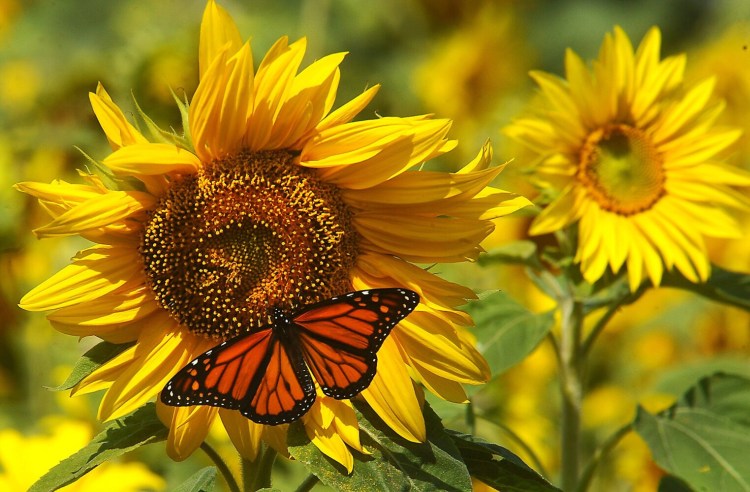Some gardeners have a prejudice against annuals. They consider them a waste of money and a creator of work because, as their name says, they have to be purchased and planted every year.
But annuals pay back that expense and labor in constant color and beauty that perennial flowering plants – which blossom for six weeks at most – can’t provide.
Flowers that are used as annuals in Maine come in two types. True annuals, sunflowers for example, are planted in the spring, produce flowers and then seeds over the course of the season and then die. But most of the plants that people grow as annuals in Maine – petunias and pelargonium (commonly called geranium), to name just two – are actually perennials in the tropical climates they come from. They’re killed by the first frost in Maine. For this column, I’ll call both sorts annuals.
The most common use for annuals is in containers. People plant pots of geraniums, marigolds and petunias, and put them by family members’ graves in cemeteries that they visit no more than once a month, knowing that the pots will look good all summer long. The same method works well for window boxes and patio planters at home, which are seen more often but can be tended just as rarely.
Another method of using annuals actually saves homeowners time and money. When people plant trees and shrubs, they need give them enough space to grow, to reach their ultimate size. Often, they plant small specimens, which cost less and do better; smaller trees and shrubs will suffer less from transplant shock. But until those plants mature, the landscape will look naked. With one-foot plants spaced six to 10 feet apart, homeowners and their neighbors see a lot of bare soil or mulch instead of a beautiful garden.
That’s where annuals come in. While the shrubs and trees slowly grow, homeowners can fill in the open spaces with annuals. These don’t have to be just the typical flowering annuals. Some annuals – such as dusty miller, caladium and canna – are grown for their foliage, not their flowers. Sweet potato vine, which is often used as a trailer or “spiller” in container plantings, can also be planted directly in the soil to fill empty garden spaces. Each year, as the trees and shrubs grow larger, it will take fewer annuals to do the trick.
Annuals also solve the problem of getting color in the shady places beneath trees that otherwise look naked and boring. A few years ago, a prime annual for shade, impatiens, was said to be threatened by a new disease, impatiens downy mildew. That threat was overblown, and most impatiens continue thriving in Maine gardens.
But while people fretted about the impatients, they began looking for other shade-tolerant annuals they could use. One discovery was New Guinea impatiens. Despite its name, it’s a different plant that is showier than traditional impatiens, has larger blossoms and blooms all season long. Begonias are another bright, showy plant that can tolerate shade.
Pansies are a superb annual, which are at their prime early in the gardening season, a time when everyone welcomes a splash of color. Young children love their face-like flowers. By mid-summer, the pansy blossoms will have gone away.
Most annuals will do better throughout the season if the blossoms are cut off after the blooms have faded. The annuals want to produce seeds, and once they have done so, they stop flowering. But the gardener wants them for their flowers. Deadheading will keep the seeds from forming and keep the plants flowering throughout the season.
Except for the sunflowers, none of the annuals I have mentioned are natives. With many people vowing to plant only natives, which provide food and shelter for native insects and birds, they might worry planting these flowers “from away” is harmful. Stop worrying. The frost will kill them, so there is no danger that they will escape to the wild and compete with Maine natives.

A bumblebee pollinates a marigold. Many annual plants, while not native to Maine, do attract insects. Photo courtesy of the University of Maine Cooperative Extension
And bees, butterflies and other pollinators make good use of the flowers on many annual plants.
They actually will help the environment.
Tom Atwell is a freelance writer gardening in Cape Elizabeth. He can be contacted at: tomatwell@me.com.
Send questions/comments to the editors.


